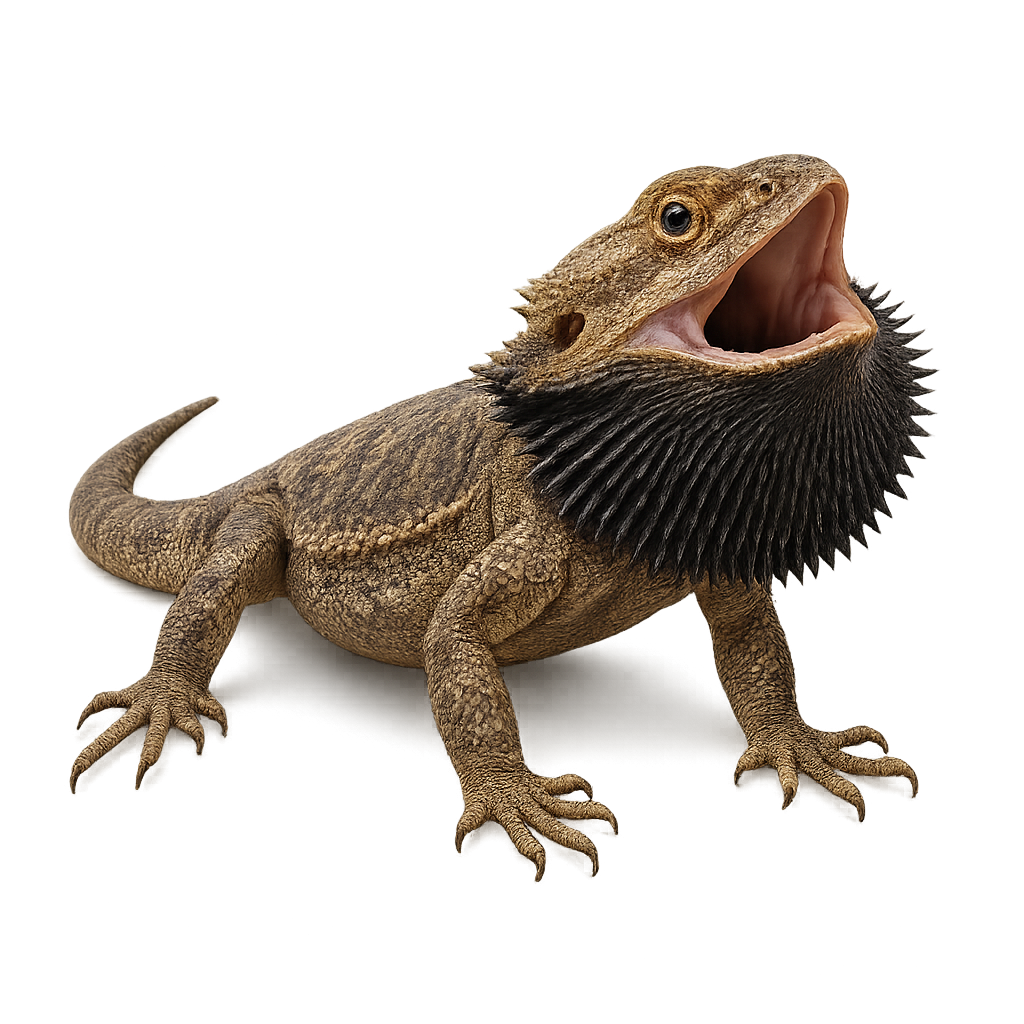Your wildlife photography guide.
Explore the bearded dragon in detail, study its behavior, prepare your shots.
Where to observe and photograph the bearded dragon in the wild
Learn where and when to spot the bearded dragon in the wild, how to identify the species based on distinctive features, and what natural environments it inhabits. The WildlifePhotographer app offers tailored photography tips that reflect the bearded dragon’s behavior, helping you capture better wildlife images. Explore the full species profile for key information including description, habitat, active periods, and approach techniques.
Bearded dragon
Scientific name: Pogona vitticeps

IUCN Status: Least Concern
Family: AGAMIDAE
Group: Reptiles
Sensitivity to human approach: Suspicious
Minimum approach distance: 5 m
Reproduction period: April to May
Incubation: 60–75 jours
Births: April to May
Habitat:
arid savannas, semi-desert areas and rocky outcrops
Activity period :
Active during the day when temperatures are favorable, often seen basking in the sun.
Identification and description:
The bearded dragon (Pogona vitticeps) is a medium-sized diurnal lizard (20–60 cm total length, including tail) with a broad triangular head and spiny scales around its throat. Native to central Australia’s arid regions, it inhabits savannas, rocky outcrops and semi-desert areas, feeding on insects, small vertebrates and plant matter. During the breeding season (September 1–February 28), males bob their beards and perform lateral shuffles to court females, which lay clutches of 15–30 eggs buried in sand. Hatchlings emerge between November 15 and April 15 after a 60–75-day incubation.
Recommended lens:
100 mm – adjust based on distance, desired framing (portrait or habitat), and approach conditions.
Photography tips:
Position yourself eye-level at about 5 m from the bearded dragon and use a 100–400 mm telephoto lens on a tripod or monopod for stability. Set aperture to f/5.6–f/8 to balance sharpness and background blur. Use a shutter speed of 1/1000 s or faster to freeze motion. Shoot during soft morning or late-afternoon light, and capture in RAW for maximum editing flexibility.
The WildlifePhotographer App is coming soon!
Be the first to explore the best nature spots, track rutting seasons, log your observations, and observe more wildlife.
Already 1 450 wildlife lovers subscribed worldwide

